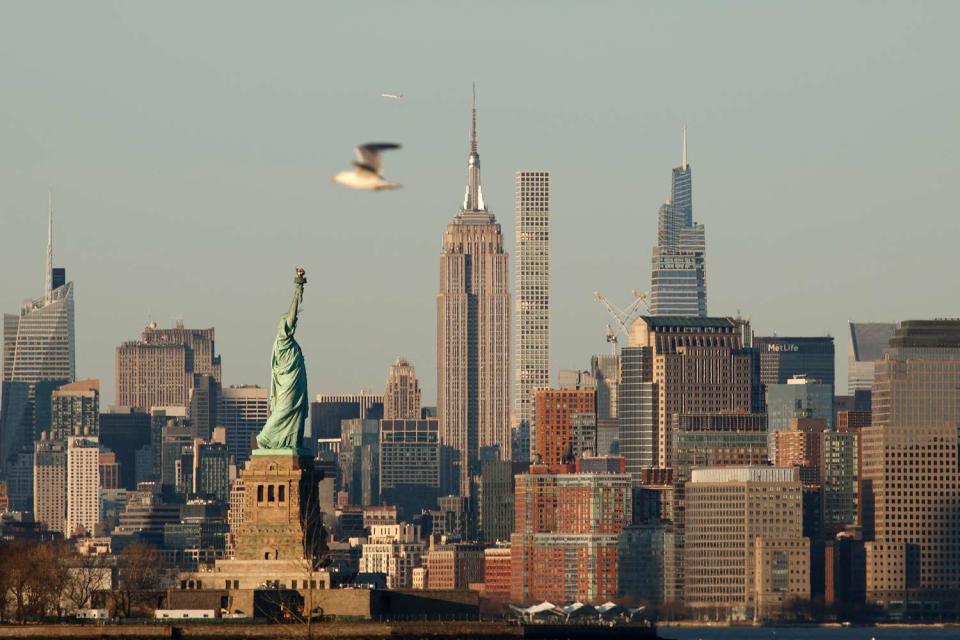Meteor Exploded Over N.Y.C. at 38,000 MPH: 'Rare Daylight Fireball'
NASA said that it does not track small meteors at "significant" distances from Earth, but individuals in New York and New Jersey reported witnessing the event

Gary Hershorn/Getty
New York City's skylineA small meteor was responsible for a big fireball over New York City on Tuesday, July 16, authorities said.
The astronomical event was first detected about 49 miles above Upper Bay/New York Harbor and moved west towards New Jersey at 38,000 mph, passing over the Statue of Liberty before disintegrating about 29 miles above midtown Manhattan, NASA confirmed in a statement.
Witnesses described seeing a fireball, hearing “booms” and feeling “shakings” between 10 a.m. to 12 p.m. local time, NASA said.
It is unclear if the sounds were related to the meteor or were due to military operations happening at the same time in New Jersey, Bill Cooke, with NASA’s Meteoroid Environments Office said, per ABC affiliate WABC-TV.
Related: Moon Cave Found Near Apollo 11 Landing Site Could One Day House Humans, Scientists Say
However, he added that the event was an unusual occurrence.
"Something when it's moving that fast it heats up,” Cooke said. “You expect to see meteors at night not during the day, so this was a rare daylight fireball."
Never miss a story — sign up for PEOPLE's free daily newsletter to stay up-to-date on the best of what PEOPLE has to offer, from celebrity news to compelling human interest stories.
While no meteorites were reported, the meteor gave pause to those underneath its trajectory.
"It was long and really, really fast," Judah Bergman, who saw the meteor from his Lakewood, N.J. office, told WABC. "It looked like a flaming, long rod or something on fire and flying through the sky."
The meteor was not even on NASA’s radar, at first, according to the organization.
Related: Astronaut Joe Engle, Last Surviving X-15 Pilot, Dies at 91
“We do keep track of asteroids that are capable of posing a danger to us Earth dwellers, but small rocks like the one producing this fireball are only about a foot in diameter, incapable of surviving all the way to the ground,” NASA said in its statement. “We do not (actually cannot) track things this small at significant distances from the Earth, so the only time we know about them is when they hit the atmosphere and generate a meteor or a fireball.”
While some seasoned New Yorkers were nonplussed, according to The New York Times, at least one resident who observed the moment reveled in its rarity.
“There’s something magical about it,” Tina Dang, a private chef, said. “You forget about these incredible moments in life, when so much else is going on.”
For more People news, make sure to sign up for our newsletter!
Read the original article on People.

